 Indians Archive
Indians Archive  Totem Poll: Vote for the Next Statue at Progressive Field
Totem Poll: Vote for the Next Statue at Progressive Field
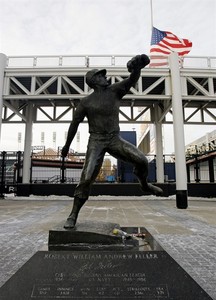 There are seven statues of former players outside Comerica Park in Detroit, six at U.S. Cellular Field in Chicago, and more than 10 in both Pittsburgh and St. Louis. But in Cleveland, a flagship city of the American League, the late, great Bob Feller stands alone in stone. The question is, which figure from Cleveland baseball history is worthy of joining Rapid Robert as the next permanent addition to the grounds outside Progressive Field? It’s time to cast your votes in the TCF "Totem Poll."
There are seven statues of former players outside Comerica Park in Detroit, six at U.S. Cellular Field in Chicago, and more than 10 in both Pittsburgh and St. Louis. But in Cleveland, a flagship city of the American League, the late, great Bob Feller stands alone in stone. The question is, which figure from Cleveland baseball history is worthy of joining Rapid Robert as the next permanent addition to the grounds outside Progressive Field? It’s time to cast your votes in the TCF "Totem Poll."
Yup, this is one of those mildly gimmicky "interactive" sort of things, and no, there is no guarantee that the Indians will abide by our collective decision. But hey, voting is easy, poll results update in real-time, and it's all on this page, so just get on board already.
In this debut edition of the Totem Poll, 16 legends have been chosen as candidates for the hypothetical honor of being a Progressive Field statue-- a role in which they'll serve as both a useful meeting place for fans and an inevitable prop in thousands of sexually suggestive Facebook photos. These 16 candidates have been broken into four separate ballots: Ballot A (Historic Hurlers), Ballot B (Infield Generals), Ballot C (Centerfield Legacy), and Ballot D (Local Folk Heroes). From there, the rules are simple: The top vote-getter from each ballot will advance to a final 4-man Totem Poll to determine the fans' choice for "The Next Statue at Progressive Field." Got it? Good. Let's get started...
Totem Poll #1: A New Tribe Statue - Preliminary Ballots
Ballot A: Historic Hurlers
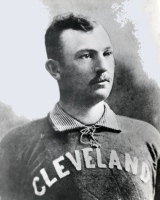
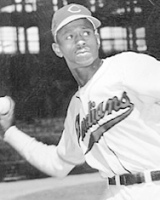
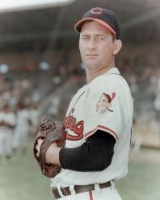
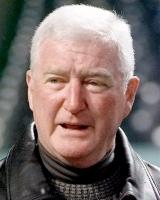
Cy Young vs Satchel Paige vs Bob Lemon vs Herb Score
Overview: Cleveland has certainly been a tad conservative when it comes to encasing its heroes in bronze. Moses Cleaveland earned the honor on account of founding the town and all, but its been slim pickings since. On the sports front, we have inexplicably failed to prop up likenesses of Paul Brown, Jim Brown, or any other Brown. Over at the Q, plans for a 50-foot King James monolith (with talcum powder spraying palms) were abruptly scrapped last summer. That just leaves the Indians' respectful little tribute to Bob Feller-- one which has only taken on greater significance since Rapid Robert's passing this past offseason. Feller was undeniably the quintessential Cleveland Indian, and when it comes to reverence, there are very few players who even come close to entering his airspace in the 120 year history of Cleveland baseball. That said, we're going to start by looking at some pitchers-- four guys who didn't approach most of Feller's various club records, but who left indelible marks, nonetheless.
Cy Young: His name is literally synonymous with pitching excellence, and while nobody reading this would remember it, Denton True "Cy" Young spent 12 of his 22 seasons (and 270 of his wins) in Cleveland, including the first nine years of his career as the star of the National League’s Cleveland Spiders. In 1892, he went 36-12 with a 1.93 ERA for the Spiders, which is fairly awesome even by 19th century standards. In 1909, Cy came back to the Forest City, this time for the AL’s Naps, and picked up his 500th career win.
Satchel Paige: Arguably the greatest pitcher that ever lived, Old Satch had dominated the Negro Leagues for 20 years before he finally made his long overdue Major League debut in 1948. . . as a Cleveland Indian. Even more importantly, the 41 year-old Paige seized the opportunity to show MLB fans what they’d been missing all those years, as he went 6-1 with a 2.48 and helped play a role in the Indians’ last championship. His iconic status was now permanently solidified in the public consciousness.
Bob Lemon: This Hall-of-Famer would certainly look right at home throwing alongside his old stablemate Feller again. Between 1947 and 1956, Lemon averaged 20 wins a season for the league’s most feared rotation.
Herb Score: The flame-throwing phenom had his career derailed by a Gil McDougald line drive in 1957, but he would find his greater legacy as the easy-going radio voice of the Tribe from 1968-1997. No man has put in more years of service to the Tribe than the late, great Herbie. He wasn't the most entertaining broadcaster of all time, but damn it, he was our voice of summer.

Ballot B: Infield Generals
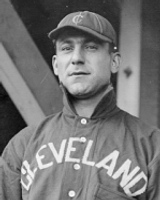
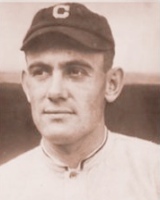
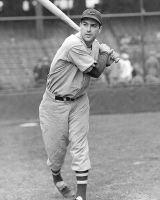
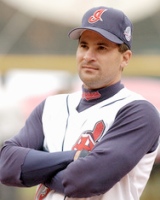
Nap Lajoie vs Ray Chapman vs Lou Boudreau vs Omar Vizquel
Overview: Moving from the mound to the middle infield, it's time to choose from some of the club's all-time great leaders and showmen. Virtually no one alive today remembers seeing the likes of Lajoie or Chapman, but in a way, that may only make the case for their statuization more relevant. If we don't honor the memories of these greats, they might eventually fade into obscurity for good.
Napoleon Lajoie: You probably can't receive a greater honor that having the team literally named after you (as the Cleveland Naps were from 1904-1915), but a statue certainly couldn’t hurt, considering we’re talking about maybe the greatest second baseman ever. Nap tallied over 2,000 hits and raked at a .339 clip across 13 seasons in Cleveland.
Ray Chapman: Today, we remember Ray Chapman as a tragic figure—the only Major Leaguer ever killed by a pitched ball (thrown by Carl Mays of the Yankees in 1920). But before that fateful day, he’d been a fun-loving local celebrity much in the Omar Vizquel mold. Like Omar, Ray was also a superb fielder and perfectly suited #2 hitter, regularly hitting .300 and leading the league in sacrifices. His biggest sacrifice, though, made him a part of baseball lore forever. After his funeral drew thousands to St. John’s Cathedral in late August of 1920, Ray’s mourning teammates somehow regrouped and made a dramatic late season dash to a World Series championship—maybe the high point in franchise history.
Lou Boudreau: It’s hard enough to conceptualize a Major League baseball team handing over the manager’s job to its 25 year-old shortstop. Harder still to envision that kid skipper winning the MVP award and leading his team to the World Championship by the age of 30. But that was Lou Boudreau—the Tribe’s homefront hero during the ‘40s and maybe its most underappreciated Hall-of-Famer
Omar Vizquel: With some ample time to reflect on the “Era of Champions” and the great joy it was watching that team in the late ‘90s, nobody exemplifies those days better than the ever-smiling Vizquel. He may or may not be the greatest defensive shortstop ever or a Hall-of-Famer like his double-play partner Robbie Alomar, but Vizquel is certainly worthy of statue consideration, supposing he ever decides to retire first.

Ballot C: The Centerfielder Legacy
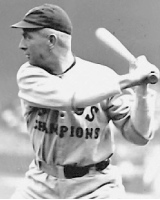
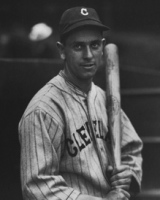
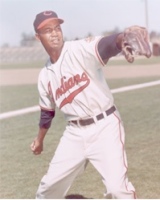
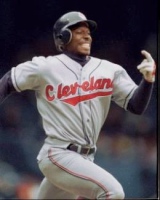
Tris Speaker vs Earl Averill vs Larry Doby vs Kenny Lofton
Overview: The Indians have arguably the greatest legacy of center fielders of any franchise in baseball. Today, Grady Sizemore carries on a tradition that dates back nearly a century to the hey day of Tris Speaker, up through the groundbreaking exploits of Larry Doby and the general affability of Rick Manning (not pictured).
Tris Speaker: After some very stellar years with the Red Sox, outfielder Tris Speaker arrived in Cleveland in 1916 to plenty of fanfare. With the exit of Naploeon Lajoie, Speaker would become the new captain of the team now known as the Indians, and he’d spend the next 11 years paving his way to Cooperstown. “The Grey Eagle” hit .354 in a Tribe uniform, and in 1920—as player-manager-- he overcame the devastating loss of his close friend Ray Chapman to lead Cleveland to its first World Series win.
Earl Averill: A beacon of light for Tribe fans during the Great Depression, Averill-- who didn't arrive in the Majors until the age of 27-- put up staggering career numbers, nonetheless. He STILL ranks #1 in team history in runs scored, #1 in RBIs, #1 in total bases, #1 in triples, third in hits (behind Lajoie and Speaker), third in doubles, and fourth in homeruns. He also played in the first six All-Star Games (1933-38) and has himself a plaque in Cooperstown.
Larry Doby: Sure, Jackie Robinson was first, and all the praise he gets is certainly warranted. But Robinson was a National Leaguer playing in the days before interleague play. This means that for all the ballparks of the American League—places like Yankee Stadium, Fenway Park, and Tiger Stadium—it was Larry Doby who broke the color barrier. And like Robinson, the Tribe outfielder did far more than that. In his first full season, he helped lead the Tribe to the 1948 World Series title, and he followed with seven more All-Star seasons after that.
Kenny Lofton: Like Vizquel, Lofton is one of the heroes of the ‘90s who can still show his face in town. The Tribe’s all-time steals leader left the team twice himself, but there seemed to be a gravitational pull bringing him back. Even as a 40 year-old on his last legs, Kenny jumpstarted the Indians last postseason run in 2007 and came a Joel Skinner stop-sign shy of leading his team to the World Series again. Lofton also has a portfolio primed and ready for statuization—be it his incredible wall-scaling, backhand catch or his slide under Randy Johnson’s tag at home plate in the 1995 ALCS.

Ballot D: Local Folk Heroes
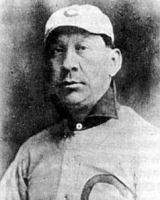
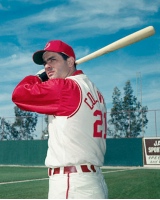
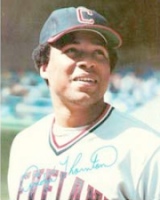
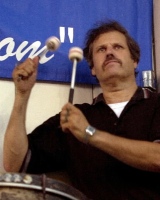
Louis Sockalexis vs Rocky Colavito vs Andre Thornton vs John Adams
Overview: Ballot D features four men who may not be household names in most other cities, but who represent something unique and admirable about baseball in Cleveland.
Louis Sockalexis: Despite the mythology that grew around the Penobscot Indian during the years after his death, there is no proof that the Cleveland Indians were actually named in his honor. Still, this connection helped shed a light on Sockalexis (often credited as being the first Native American in the Majors) and his brief career with the Cleveland Spiders. Despite a .313 career average, “Sock” appeared in only 94 games from 1897 and 1899. By the start of the new century, alcoholism, injuries, and consistent discrimination had forced him out of the pros at just 29 years of age. He’d be dead by 42, but nearly a century later, the importance of Louis Sockalexis as a figure in Cleveland baseball history and Native American history is finally earning its due appreciation. A statue would be a fitting tribute and maybe a good first step in shaking some of the criticism the Indians franchise has long dealt with regarding its name and logo.
Rocky Colavito: In the era of Willie, Mickey, and the Duke, Cleveland had The Rock—arguably the most popular hitter in team history. Colavito wasn’t a Hall of Famer, but he finished in the top 5 in MVP voting 3 times as an Indian. And even though his inexplicable 1960 trade to Detroit split his career here into two tenures, Rocky would remain a local hero throughout the ‘60s; a sleek, natural slugger in the mold they just don’t make anymore.
Andre Thornton: He was a career .254 hitter and never finished better than 19th in MVP voting, but for 10 years, Andre Thornton was the most reliable hitter and likable player on a consistently directionless, awful Indians club from 1977-1987. Is that enough to earn him a statue? Well, for many of us, Indians baseball might be better represented by a guy like Andre—a class act for a hopeless cause—rather than a heroic champion from a bygone era. Guys like Thornton never expect to get a statue, but maybe they’re as deserving as anyone.
John Adams: He’s never swung the bat or thrown a pitch, but John Adams has been banging his drum in the bleachers for almost 40 years, weaving himself into the fabric of the franchise as its living soundtrack. Since the early ‘70s—through good times and a whole lot of bad—Adams has been a fixture, first at Cleveland Stadium and later at the Jake. Every fan knows his name and feels a kinship with him, whether they’ve chatted him up at a ballgame or just find themselves instinctively expecting all great sports rallies to be prefaced by a steady drumbeat. Why make a statue of a guy in the stands? Well, players come and go. An enduring fan is perhaps the most noble representative a team could have. Perhaps...

Be sure to keep an eye out for the ballot results to see who advances to the final Totem Poll next month.
- NBA Announces 2013-2014 Schedule
- Browns Ink Sharknado
- Sharknado A No-Show For Rookie Camp
- Trent Richardson Out Until Training Camp
- Browns Sign Brandon Jackson
- Carrasco Suspended Eight Games
- Browns Add to Wide Receiver Depth with David Nelson
- Browns Need to Learn from Past Draft Mistakes
- Browns Release Chris Gocong and Usama Young
- Browns Missing on Grimes Disappointing, But Not The End
The TCF Forums
- Chris Grant's first 3 drafts
Kingpin74 (Tuesday, January 21 2014 10:13 AM) - The 2014 Offseason Thread
googleeph2 (Tuesday, January 21 2014 9:36 AM) - 2015 Recruiting
furls (Tuesday, January 21 2014 6:57 AM) - Mike Brown
YahooFanChicago (Monday, January 20 2014 11:15 PM) - Movies coming out
HoodooMan (Monday, January 20 2014 9:34 PM) - 2014 Hoops Hockey Hijinx
jpd1224 (Monday, January 20 2014 4:44 PM) - 2014 Recruiting
jclvd_23 (Monday, January 20 2014 2:26 PM) - Wish List - #4 Pick
Hikohadon (Monday, January 20 2014 1:26 PM) - Official- Browns Coach Search/Rumors
OldDawg (Sunday, January 19 2014 6:48 PM) - #1 overall pick Anthony Bennett
TouchEmAllTime (Sunday, January 19 2014 1:28 PM)


